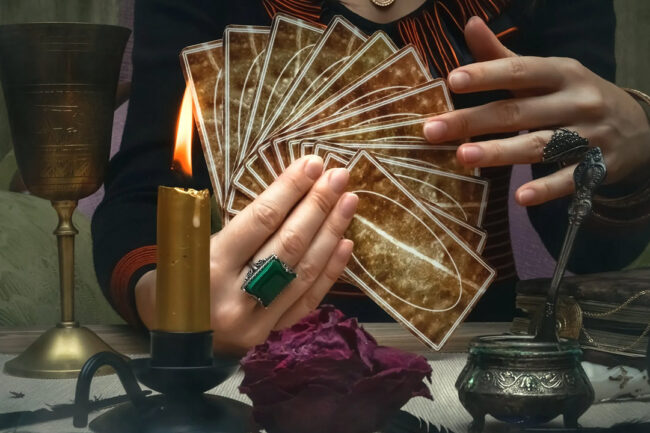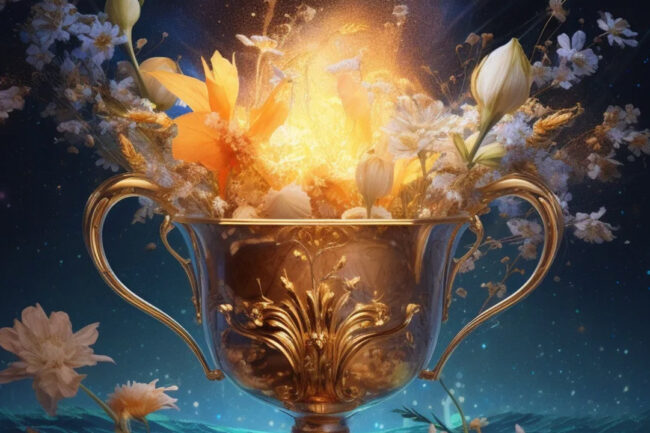 In astrology, the fifth house is associated with creativity, self-expression, romance, pleasure, hobbies, and children. It’s traditionally ruled by the sign Leo and the Sun, which imbues it with qualities of vitality, passion, and individuality. Here’s a breakdown of what the fifth house represents:
In astrology, the fifth house is associated with creativity, self-expression, romance, pleasure, hobbies, and children. It’s traditionally ruled by the sign Leo and the Sun, which imbues it with qualities of vitality, passion, and individuality. Here’s a breakdown of what the fifth house represents:
Creativity: The fifth house governs your creative self-expression, including artistic endeavors, hobbies, and any activities where you can showcase your unique talents and abilities.
Romance and Love Affairs: This house is linked to romance, love affairs, and the pursuit of pleasure. It reflects how you approach romantic relationships and your capacity for enjoyment and playfulness in love.
Children and Parenthood: The fifth house is also associated with children, both your own offspring and your experiences as a parent or with parenting. It can indicate fertility, the desire for children, and the bond between parents and their offspring.
Fun and Entertainment: It represents your leisure activities, hobbies, and sources of entertainment. This includes anything that brings you joy and allows you to express yourself freely.
Speculation and Gambling: The fifth house is sometimes associated with speculation, risk-taking, and gambling, as it governs luck and fortune in games of chance. However, this aspect is more about the thrill of taking risks rather than financial investments.
Creative Projects and Ventures: It symbolizes entrepreneurial ventures, creative projects, and endeavors where you take a personal risk to express yourself or bring something new into the world.
Overall, the fifth house is about embracing joy, creativity, and self-expression in various aspects of life, including romance, hobbies, and artistic pursuits. It encourages you to explore your passions, take risks, and find fulfillment through creative expression and enjoyment.

 In tarot, the Knight of Cups is one of the court cards within the suit of Cups. Each of the court cards typically represents a personality type or a situation. The Knight of Cups is often associated with qualities such as romanticism, charm, idealism, and creativity. Here’s a breakdown of what the Knight of Cups typically signifies:
In tarot, the Knight of Cups is one of the court cards within the suit of Cups. Each of the court cards typically represents a personality type or a situation. The Knight of Cups is often associated with qualities such as romanticism, charm, idealism, and creativity. Here’s a breakdown of what the Knight of Cups typically signifies: Learning to channel is a journey of self-discovery and spiritual growth that involves tapping into higher sources of wisdom, guidance, and energy. Whether you’re interested in channeling messages from spirit guides, accessing your intuition, or connecting with universal consciousness, here are some steps to help you develop your channeling abilities:
Learning to channel is a journey of self-discovery and spiritual growth that involves tapping into higher sources of wisdom, guidance, and energy. Whether you’re interested in channeling messages from spirit guides, accessing your intuition, or connecting with universal consciousness, here are some steps to help you develop your channeling abilities: Attracting Positive Energy – Step One: Cultivating Gratitude
Attracting Positive Energy – Step One: Cultivating Gratitude In astrology, the fourth house represents several key themes related to home, family, roots, and inner emotional security. It’s traditionally associated with the sign of Cancer and ruled by the Moon, which adds layers of sensitivity and intuition to its influence.
In astrology, the fourth house represents several key themes related to home, family, roots, and inner emotional security. It’s traditionally associated with the sign of Cancer and ruled by the Moon, which adds layers of sensitivity and intuition to its influence. The Page of Cups is one of the court cards in the Tarot’s suit of Cups. In a Tarot reading, court cards often represent specific personality traits, situations, or people in the querent’s life.
The Page of Cups is one of the court cards in the Tarot’s suit of Cups. In a Tarot reading, court cards often represent specific personality traits, situations, or people in the querent’s life. Attracting positive energy involves creating a mindset and environment that promotes feelings of optimism, gratitude, and well-being. Here are some practices that can help you attract positive energy:
Attracting positive energy involves creating a mindset and environment that promotes feelings of optimism, gratitude, and well-being. Here are some practices that can help you attract positive energy: Anatidaephobia is the irrational fear that somewhere, a duck or goose is watching you.
Anatidaephobia is the irrational fear that somewhere, a duck or goose is watching you. The Ten Cards in the Suit of Cups.
The Ten Cards in the Suit of Cups. The Third House is traditionally associated with communication, learning, siblings, short trips, local travel, and the immediate environment. Here’s a breakdown of what the Third House represents in astrology:
The Third House is traditionally associated with communication, learning, siblings, short trips, local travel, and the immediate environment. Here’s a breakdown of what the Third House represents in astrology: